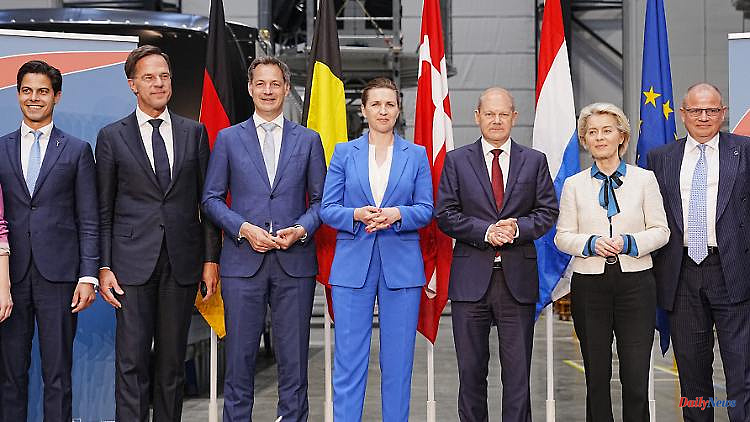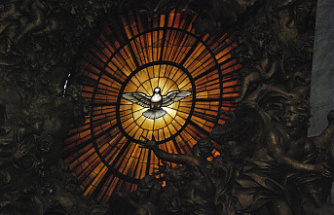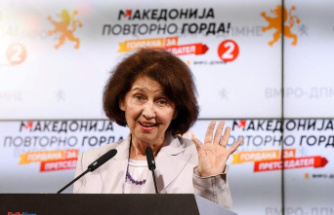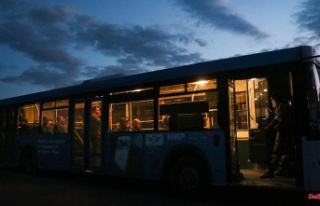Germany, Denmark, the Netherlands and Belgium want to install wind turbines with a capacity of 65 GW in the North Sea by the end of the decade - all in cooperation. Economics Minister Habeck speaks to real European power plants. The time when everyone did their "stuff" is over.
In an effort to turn away from Russian energy supplies, the countries bordering the North Sea are intensifying their cooperation: the energy ministers of Germany, Denmark, the Netherlands and Belgium signed a cooperation for offshore wind energy and green hydrogen at the North Sea summit in Esbjerg, Denmark. The generation capacity for wind power is to be increased tenfold by 2050.
"What we are sending as a signal today is a signal for the environment that we will actually manage to ensure, with major industrial progress, that we remain economically strong and at the same time can operate in a climate-neutral manner," said Federal Chancellor Olaf Scholz on ntv . "But it's more of a signal to Russia and Putin, especially in this situation. We will very quickly become independent of fossil imports from Russia, and that's good news in the current situation."
Federal Minister of Economics Robert Habeck spoke of the "foundation for the first real European power plants". On ZDF he said: "The projects should be developed jointly, financed jointly and the electricity should be distributed jointly." The aim is "that each country no longer does its own stuff, but that it is really tackled cooperatively".
It was agreed in Esbjerg to jointly develop hybrid offshore cooperation projects, so-called energy islands: They should combine wind farms and power grids, several member states should be connected. The North Sea region should develop as a "Green Power Plant of Europe".
The four North Sea residents agreed on specific expansion targets of at least 65 gigawatts by 2030 and 150 gigawatts by 2050. This is a tenfold increase in current generation capacity by 2050, the Federal Ministry of Economics explained. In addition, the production of green hydrogen with the wind energy generated at sea is to be added; cooperation is to be intensified in expanding the necessary infrastructure.
The entire EU plans to increase its offshore capacities twentyfold to 300 gigawatts by 2050. According to Habeck, Germany wants to increase its capacities to 30 gigawatts by 2030. According to the plans of the federal government, at least 70 gigawatts are to be generated in 2045.
In the joint final declaration, Denmark committed to building an "energy island" in the North Sea, where three gigawatts of electricity will be generated by 2033, which can also be sent to Belgium. Germany and the Netherlands are also to be connected.
According to the declaration, Belgium wants to build such an "energy island" by 2030, which should supply 5.8 gigawatts of electricity. Both "islands" are to be connected. Denmark wants to supply the Netherlands with green electricity for an energy distribution center.
Habeck and Danish Energy Minister Dan Jörgensen also signed a bilateral memorandum of understanding in which both countries agree to work together in the field of green hydrogen and the development of cross-border infrastructure. They are also planning an "energy island" in the Baltic Sea.
The heads of state and government of the neighboring countries also took part in the North Sea summit. EU Commission President Ursula von der Leyen and EU Energy Commissioner Kadri Simson as well as company representatives were also present.
6












